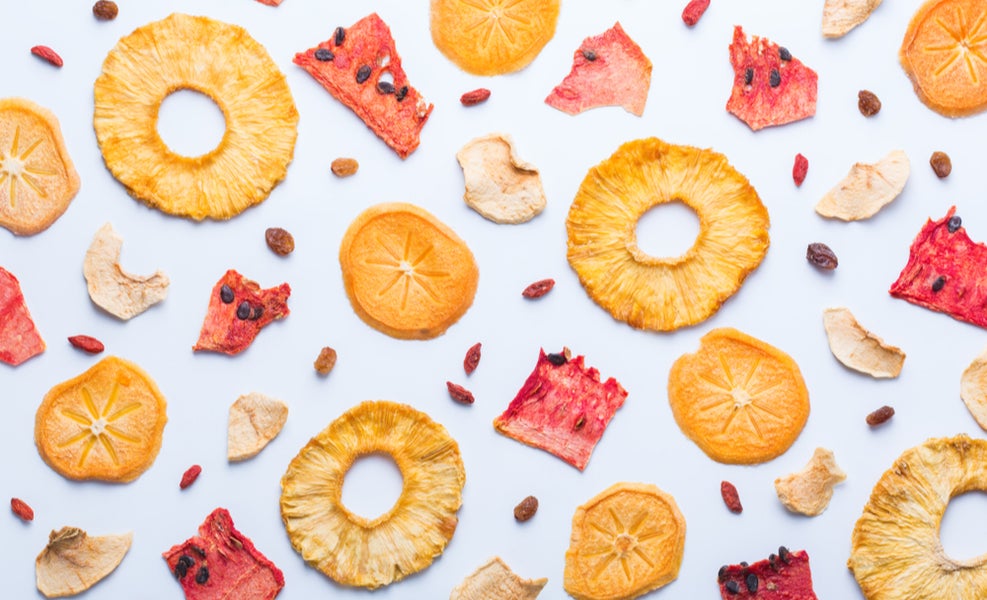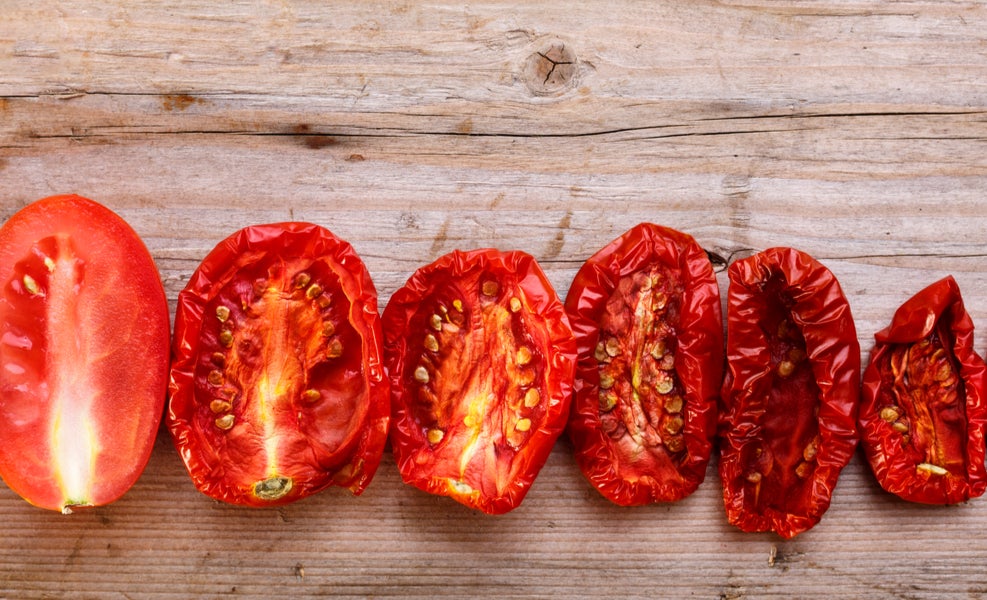A Brief History of Food Drying
Food dehydration is gaining popularity once again, but this process of food preservation has strong roots in history. So, we took on the task of learning about the long and rich history of food dehydration. And today, we’re going to share it with you!
Food dehydration is the world’s oldest method of food preservation. Think about that for a moment. It’s not as if freezers and refrigerators were readily available during times of yore, and people needed to preserve food to get themselves through the winter. So how did they possibly do it? For the most part, they dried their food. Today, we live in a futuristic world of canned this, frozen that, freeze-dried this, and irradiated something else.
Even the processes of canning food for preservation and storage is only about two hundred years old. That’s practically brand new in the food preservation timeline. Canning and freezing food only rose in popularity during the early 1900s, when electricity became more easily available to the masses (regardless of their stature in life or location).
If you’re looking to get into the exciting and trendy world of food dehydration, then you can find everything that you need to know about the process at easy-food-dehydrating.com. This website is a must-read for anybody interested in starting their own food dehydration adventure. It contains detailed instructions and recipes for dehydrating fruits, vegetables, meat, and even pet food. The site is run by Susan Gast, a successful author behind several books about food dehydration. She is clearly quite passionate about the topic and her enthusiasm is infectious.
So, how did food dehydration begin? Well, centuries ago people in the Near East preserved fruit by wrapping it in dried palm leaves and burying it in hot sand to dry. Only a century or so ago, people in the Arctic created caches of surplus “freeze dried” walrus meat by piling stones on top of their treasure to keep safe from predators. Native Americans in northern parts of the United States used smoke (dry circulating air) from a fire to dry their meats, herbs, vegetables, and fish. To this day, locals in Peru dry potatoes by first freezing them overnight outdoors and then trampling them the next day, while the potatoes thawed (thus squeezing out all of the remaining water found within). Then, they air-dried the potatoes until crisp enough to store. Almost everywhere in the world, people have utilized some form of dehydration to save their food from spoiling between seasons, be it hay or corn or seal meat or apples. It’s hard to pinpoint precisely where or how the process began because food dehydration seems to have been embraced by practically every culture worldwide!
So, why did people start drying out their food? It’s really quite simple—fresh food was not always available. Don’t forget, there was a time before grocery stores. Without dried foods, a nomadic lifestyle would have been impossible. The sun and wind (or the smoke from a fire) provided the means to remove water from grains, meat, fruits, and herbs. This allowed them to be preserved from one season to the next. The process saved lives by filling bellies during lean seasons or travel. However, it wasn’t easy. Successfully drying food depended upon choosing the correct days to dry it, luck, and more than a little ingenuity. The elements were unpredictable and the environment untameable. For example, food that was left to dry in open fields could be gone in a flash. It could rain, insects could infest it, or wild animals and birds could enjoy the feast. Entire crops could be lost by accident and starvation would follow. It was a delicate and important process, one that proved to be crucial to the survival of countless cultures.
Over time, a variety of cultures from around the world perfected the technique of drying wild and cultivated foods. The Greeks and Romans dried peas and grapes successfully (you’re welcome raisin lovers!). The Persians discovered ways to successfully preserve dates, apricots, and melons. The Chinese and Japanese proved to be especially clever at the art of food preservation, curing fish and sea vegetables with relative ease. Mongolian explorers, en route to Europe, packed bundles of dried milk products to sustain them throughout the epic journey. In Canada, early settlers learned how to dry food from the indigenous population. They observed the practice of sun-drying food by Native Americans in the northern regions. Soon they were able to dry wide varieties of corn, squash, and herbs (plus buffalo meat and venison, pioneered in the west).
Way back in the nineteenth century United States, many housewives began to expand the possibilities of food preservation. They started preserving fruits in sugar, vegetables and nuts in salt, and vegetables in brine. Dried food was a traditional alternative to fresh food, but before the age of glass canning jars and self-sealing zinc jar lids (which were not patented until 1858), food was most likely to be stored in stone or earthenware crocks, tin cans, and glass containers. Sealing wax, beeswax, corks, and even putty were sometimes used to seal the lids. So stored food didn’t exactly look as appealing or professional as what we’re used to today. It looked more like an arts and crafts project than commercial food.
Throughout history, dried meats and fish have provided life-sustaining protein for people around the world. Our ancestors dried meats and kept them for years without refrigeration (expiry dates weren’t exactly common at the time). In fact, meats and fish were the most commonly dried foods throughout history since they were much harder to come by. It’s ironic to consider this now, given that fish is one of the most difficult types of food to dry due to the vast potential for bacterial growth in the raw product. Historically, meat (like fish) was pre-treated in a dry salt cure or a brine solution. The salt served to draw water out of the food and turned it into a primitive form of the jerky you might buy in a gas station. Meats and fish were also smoked for preservation, but obviously this process didn’t allow the food to last as long as dehydration.
Many foods that we take for granted today would not be part of the world’s cuisines were it not for vital pioneers discovering how to dry and preserve them for extended periods of time. How different would Chinese, Japanese, Thai, and other Asian cuisines be without dried fish, shellfish, or sea vegetables like seaweed? It’s almost impossible to imagine what those menus would look like without dehydration.
After centuries of experimentation, several Asian cultures discovered that many foods had intriguing flavors and textures when dried. This created new recipes and flavour profiles that never would have existed otherwise. For instance, the Chinese enjoy fresh sea scallops in cooking, but even that delicacy cannot be compared to the exquisite taste of a dried scallop. Flowers like lily buds are also eaten fresh throughout Asia, but are more commonly consumed dried. The same can be said for fungi, such as tree ears. Some items, such as shark’s fin and sea slug, are more prized (and more expensive) in dried form than fresh.
Additionally, the Chinese lay claim to being the first to cure pork products like ham, bacon, and sausage. They called it ham huo-fu or fire-dried meat. More specifically, the word refers to any meat that is cured by having first been soaked in a soy sauce marinade, then dried over a slow fire. Many Chinese chefs also treat bacon in the same way. To this day, strips of cured pork belly, dark golden in color, hang in Chinese meat markets. The flavour is extraordinary, a true delicacy that would never be possible without the innovation of food dehydration.
As you can see, the history of food dehydration is vast and spans many cultures. These days, there are so many different forms of food preservation available that dehydration can often seem like a an odd and niche practice. However, anyone who denies themselves the joy of dehydrated food isn’t just missing out on delicious food, they are also ignoring an important development in the history of humanity. So, don’t shy away from food dehydration. It is after all one of the most important methods of food preservation and preparation ever conceived by humans.


